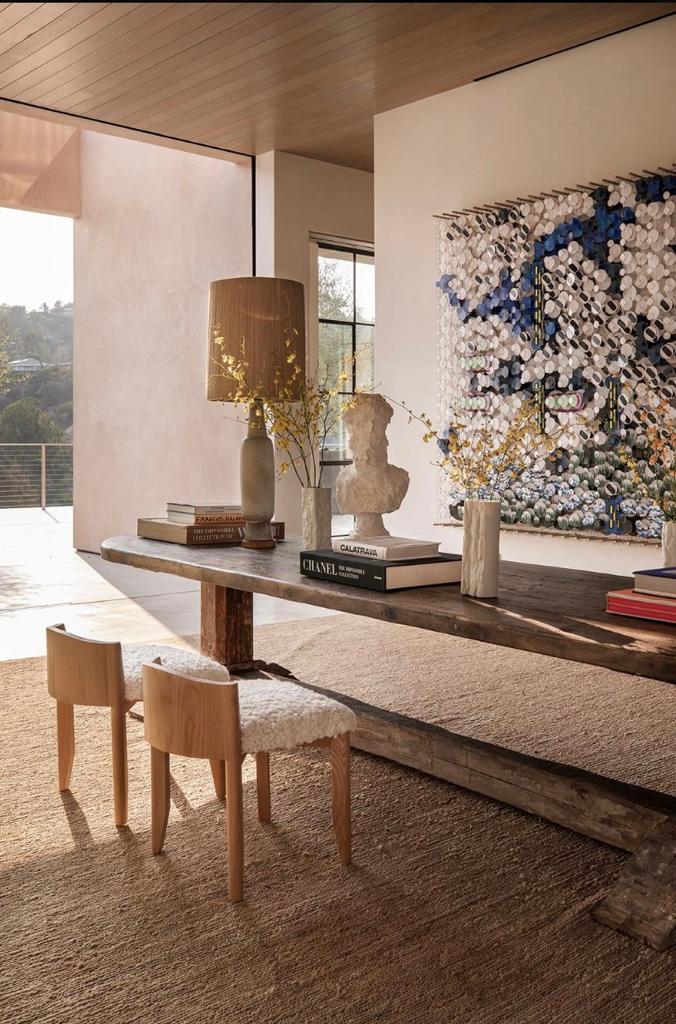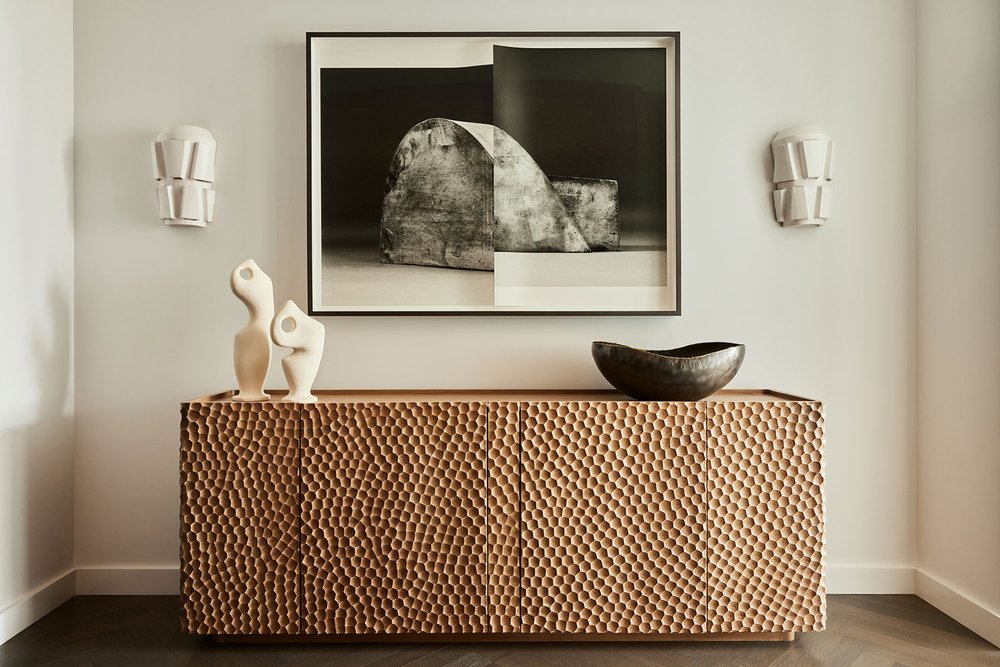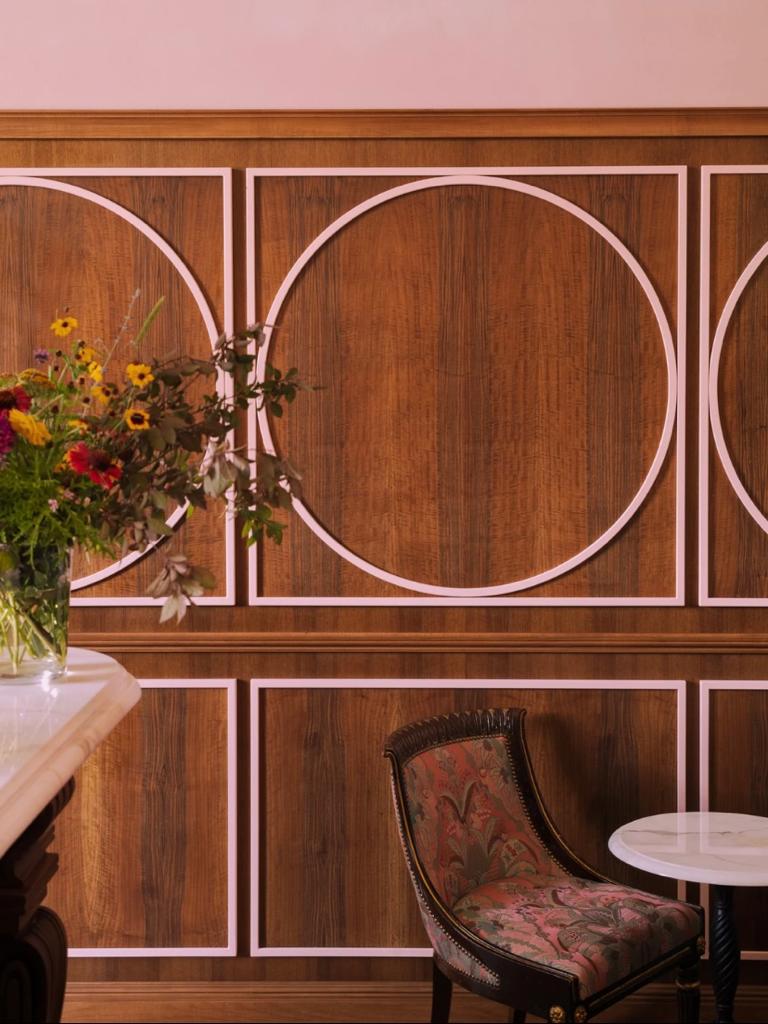
Stories are infinite agglomerations of causes and effects, messages, and imaginings; all of them requiring a teller and a listener. What if in this case, the message was not transmitted with words but through static visuals? Indeed, what we aim to show today is how interiors themselves can function as the means through which a narrative is told and experienced by its owner and visitors. Just like the paintings and sculptures in museums convey a story, interiors can do the same through the art of design by incorporating various visual, spatial, and sensory components to create an immersive experience and communicate a specific theme or concept.

Take a look at the case of the Sydney Opera House designed by Jørn Utzon to reflect Australia’s narrative of cultural identity through its close relationship to the sea. Using design to carve this message into its interiors, the spirit of the country was embodied in the soaring ceilings and curved shell-like structures to present a sense of movement and fluidity. It is through this careful arrangement that a building is able to reference a nation’s maritime heritage without recurring to words or sounds.

Designing a narrative
First, one must begin- as with all stories- by capturing a clear theme or narrative for the interior. Like a binding thread, the theme will guide all design decisions such as the type of furniture, fixtures, and décor that reflect the narrative’s era, culture, or mood. By contributing to the overall story, each piece of historical relevance and symbolic meaning can be placed in a strategic arrangement to help guide visitors through a specific sequence. Like turning pages of a book, the spatial layout softly reveals different parts of a narrative as visitors move through a space, observing the story’s progression.

Symbolism in details
In previous writings we have described how color can transform our perception of space, express particular meanings, and bring forth memories captured in different shades. Following this logic, colors can also reinforce the narrative you want to convey whether through warm shades that align with a sense of comfort and nostalgia or cool colors that create a tranquil and modern atmosphere. To embellish this visual aspect of storytelling with foreshadowing and exclamation marks, one turns to lighting. This feature helps set the mood and highlight specific elements within a space by adjusting the right level of brightness, incorporating dramatic or minimalist fixtures, and setting a color temperature that aligns with the story’s emotional tone.

It is now time to move on to texture and form as features that provide a certain flair and a touch of uniqueness to the narrative just as literary devices aid authors enhance their writing. In the case of textures and materials, these can enhance the sensory experience of an interior and reinforce the narrative by alluding to specific time periods, familiar patterns, and natural or industrial elements that complement particular design styles. For example, rustic textures might bring forth a sense of vintage nostalgia, while sleek glass or concrete communicates innovation and sets a futuristic tone.

Lastly, it is in the architectural details like arches, columns, moldings, and decorated ceilings that we can set our interiors in the narrative’s context. Just as gothic arches might lend a medieval and dramatic atmosphere or Greek columns transport us to a classical stage, clean lines and simple features convey a more contemporary feel. Imagine stepping into the interiors of the Palace of Versailles and coming face to face with the imposing opulence and power of the 17th and 18th century French monarchy. Among the elaborate gilded decorations, realistic frescoes, and grand chandeliers it is easy to forget about the presence with this detailed reflection of France’s past royalty, luxury, and artistic achievement narrated through design.

Guiding memories and emotions
The beauty of symbolism in storytelling is its capacity to convey meaning subtly and encouraging the listener to actively engage with the teller through shared cues. When it comes to incorporating symbolic elements in interior design this becomes the perfect opportunity to reminisce in memories while selecting the features that give meaning to a narrative. These could be quiet details that keen observers can pick out, adding layers of depth to the experience.

Another way of encouraging visitors to interact with our indoor narrative as active spectators is to incorporate multisensory elements and interactive features. Scent, sound, and tactile experiences can significantly enhance the emotional impact of a story by simply introducing elements such as the crackling of wood in a fireplace, scented candles that create a direct link with our memory, or the welcoming texture of a velvet couch over a thin carpet. Moreover, while awakening people’s senses their attention can also be drawn further through interactive elements such as touch sensitive lighting systems, smart home mirrors with displays, textured wall panels, or dynamic furniture pieces like rotating bookshelves and modular seating arrangements.

Finally, it is also through transitions and progression that our story can make sense among all the elements that comprise our interiors. Similar to how a narrative unfolds, the transitions between different spaces can be used to mark shifts, gradually revealing new facets of the story. These can come in subtle forms such as shifts in flooring and changes in ceiling height or in greater scale through open shelving, room dividers, and sliding doors. The Guggenheim Museum Bilbao provides a perfect example of this while challenging traditional museum interiors. Its fluid and dynamic layout composed of curved walls and modern materials, guides visitors towards the future by narrating the story of contemporary art through the progression of cutting edge design, creativity, and innovation.

Reading the cues
While storytelling requires an acute listener to capture the message, discerning the narrative that an interior design seeks to convey requires a keen observer. We must look for the visual cues such as thematic artwork, symbolic elements, and architectural features that provide context and depth to a space. Allow your eyes to follow the amalgam of colors, textures, furnishings, and spatial arrangement to notice how they align cohesively and evoke a distinct atmosphere and emotional response. When it comes to design, there are no coincidences or accidents, every element-like words on paper- is positioned with careful deliberation so that you, the observer, can immerse yourself in the narrative of interiors.
